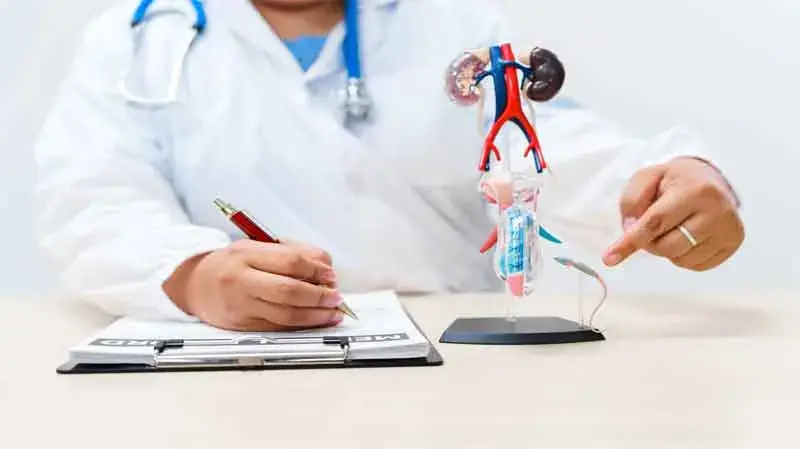Prostate Cancer: Essential Knowledge for Every Man
Prostate cancer is one of the most common cancers affecting men globally, yet it remains shrouded in myths and misconceptions. Understanding this condition is not just crucial for those at risk but for all men striving to lead healthier lives. This article provides a comprehensive overview of the facts, risk factors, and proactive measures every man should take to stay informed and vigilant.
Understanding Prostate Cancer
The prostate is a small, walnut-shaped gland located below the bladder and in front of the rectum. Its primary function is to produce seminal fluid, which nourishes and transports sperm.
Prostate cancer occurs when abnormal cells in this gland grow uncontrollably. While some types of prostate cancer grow slowly and may not cause significant harm, others are aggressive and can spread to other parts of the body.
Prevalence:
Prostate cancer is the second most common cancer in men worldwide. Early detection and advancements in treatment have significantly improved survival rates, making awareness critical.
Symptoms:
Many men with prostate cancer experience no symptoms in the early stages. As the disease progresses, common symptoms may include difficulty urinating, blood in urine or semen, and pain in the hips or back.
The Risk Factors You Need to Know
While the exact cause of prostate cancer remains unclear, several factors have been linked to an increased risk:
Age: The risk of prostate cancer increases significantly after age 50, with most cases diagnosed in men over 65.
Family History: A man with a father or brother diagnosed with prostate cancer is at higher risk, especially if the relative was diagnosed at a young age.
Race: African-American men face a higher risk of developing and dying from prostate cancer compared to men of other races.
Diet and Lifestyle: Diets high in red and processed meats and low in fruits and vegetables may contribute to a higher risk. Sedentary lifestyles can also exacerbate this risk.
Genetic Mutations: Inherited mutations in genes such as BRCA1 and BRCA2 can increase susceptibility.
Proactive Measures for Prevention and Early Detection
The good news is that many steps can be taken to mitigate the risk of prostate cancer or detect it early when it is most treatable.
Adopt a Healthy Diet:
- Prioritize foods rich in antioxidants, such as tomatoes (lycopene) and green tea.
- Incorporate omega-3 fatty acids found in fish like salmon and mackerel.
- Limit saturated fats and processed foods.
Stay Active:
- Regular physical activity helps maintain a healthy weight, which is linked to a lower risk of aggressive prostate cancer.
- Strength training and aerobic exercises are particularly beneficial.
Regular Screenings:
- The prostate-specific antigen (PSA) test measures levels of PSA in the blood, which can be an indicator of prostate issues, including cancer.
- Digital rectal exams (DRE) can also help detect abnormalities.
- Men should discuss with their healthcare provider when to begin regular screenings, typically around age 50, or earlier for those with higher risks.
Know Your Family History:
- Understanding your genetic predisposition can guide your screening schedule and preventive measures.
Treatment and Living with Prostate Cancer
For those diagnosed with prostate cancer, the journey varies depending on the stage and type of cancer. Advances in medical science have made it possible to tailor treatment to the individual’s needs.
Treatment Options:
- Active Surveillance: For slow-growing cancers, close monitoring may be recommended instead of immediate treatment.
- Surgery: Prostatectomy, or the surgical removal of the prostate, is a common treatment for localized cancers.
- Radiation Therapy: Targeted radiation can kill cancer cells or shrink tumors.
- Hormone Therapy: This reduces levels of male hormones that fuel cancer growth.
- Chemotherapy: Used in advanced cases to attack rapidly dividing cells.
Managing Side Effects:
- Common side effects include urinary incontinence and erectile dysfunction, but rehabilitation therapies can significantly improve quality of life.
- Psychological support, including counseling and support groups, is crucial for mental well-being.
Living Beyond Cancer:
- Many men live long, healthy lives after treatment. Regular follow-ups and a focus on a balanced lifestyle are essential for maintaining health.
References
- National Cancer Institute - Prostate Cancer
- American Cancer Society - Prostate Cancer Overview
- Prostate Cancer Foundation
- Mayo Clinic - Prostate Cancer
- World Health Organization - Cancer Fact Sheets
- Johns Hopkins Medicine - Prostate Cancer
- Cancer Research UK - Prostate Cancer
- Urology Care Foundation - Prostate Cancer
- National Comprehensive Cancer Network
- Healthline - Prostate Cancer










































































